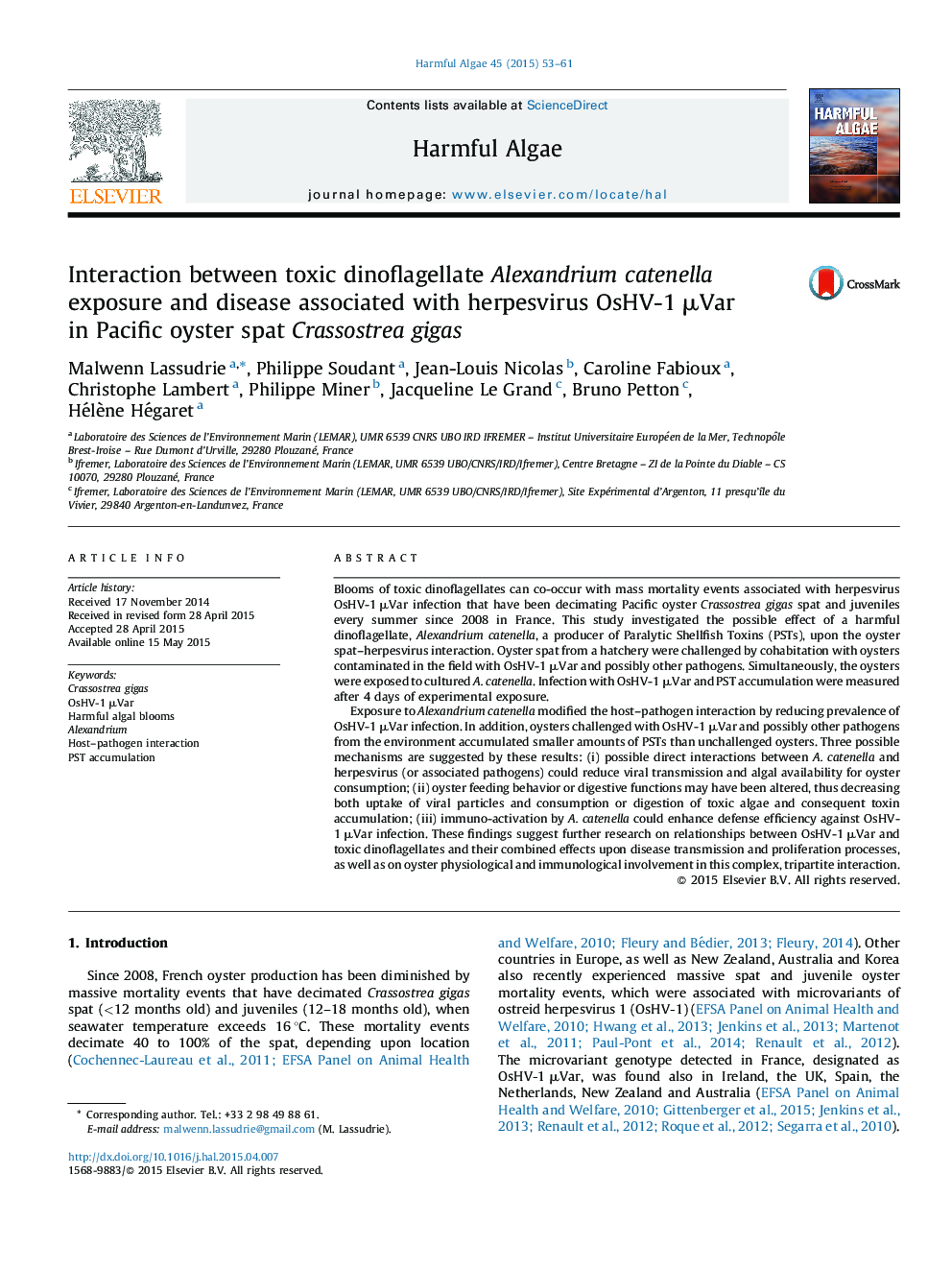| Article ID | Journal | Published Year | Pages | File Type |
|---|---|---|---|---|
| 4545235 | Harmful Algae | 2015 | 9 Pages |
•Exposure to A. catenella and challenge by cohabitation with OsHV-1-infected oysters.•catenella exposure for 4 days decreased OsHV-1 prevalence.•Challenge by cohabitation with OsHV-1-infected oysters decreased toxin accumulation.
Blooms of toxic dinoflagellates can co-occur with mass mortality events associated with herpesvirus OsHV-1 μVar infection that have been decimating Pacific oyster Crassostrea gigas spat and juveniles every summer since 2008 in France. This study investigated the possible effect of a harmful dinoflagellate, Alexandrium catenella, a producer of Paralytic Shellfish Toxins (PSTs), upon the oyster spat–herpesvirus interaction. Oyster spat from a hatchery were challenged by cohabitation with oysters contaminated in the field with OsHV-1 μVar and possibly other pathogens. Simultaneously, the oysters were exposed to cultured A. catenella. Infection with OsHV-1 μVar and PST accumulation were measured after 4 days of experimental exposure.Exposure to Alexandrium catenella modified the host–pathogen interaction by reducing prevalence of OsHV-1 μVar infection. In addition, oysters challenged with OsHV-1 μVar and possibly other pathogens from the environment accumulated smaller amounts of PSTs than unchallenged oysters. Three possible mechanisms are suggested by these results: (i) possible direct interactions between A. catenella and herpesvirus (or associated pathogens) could reduce viral transmission and algal availability for oyster consumption; (ii) oyster feeding behavior or digestive functions may have been altered, thus decreasing both uptake of viral particles and consumption or digestion of toxic algae and consequent toxin accumulation; (iii) immuno-activation by A. catenella could enhance defense efficiency against OsHV-1 μVar infection. These findings suggest further research on relationships between OsHV-1 μVar and toxic dinoflagellates and their combined effects upon disease transmission and proliferation processes, as well as on oyster physiological and immunological involvement in this complex, tripartite interaction.
